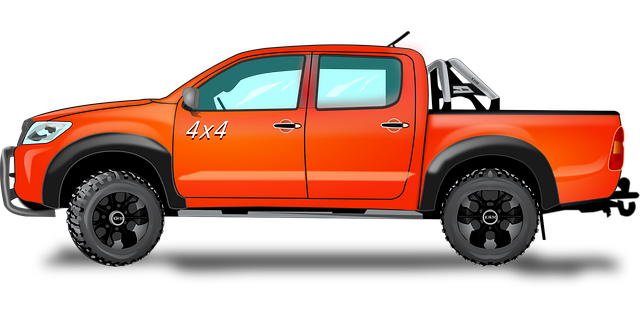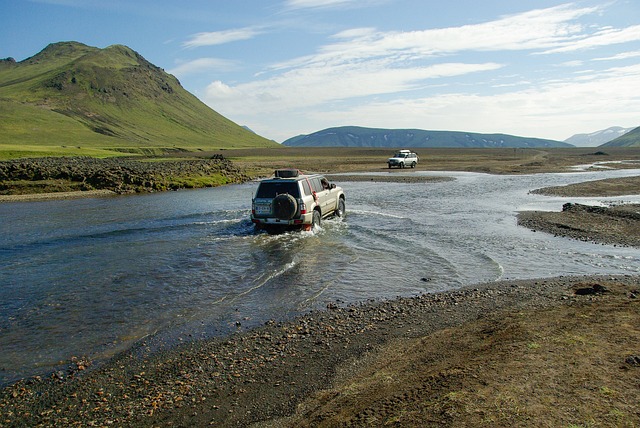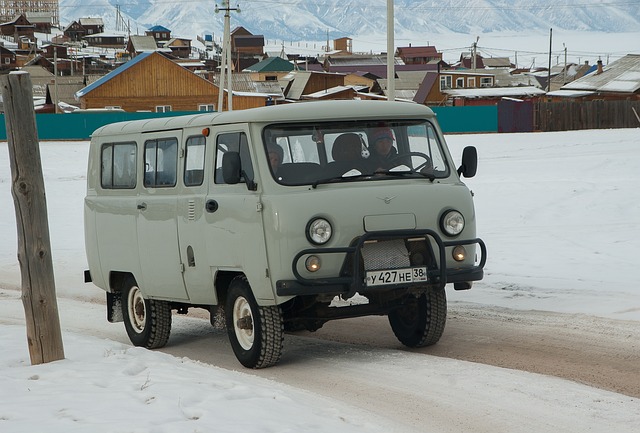Truck bed liners are crucial 4×4 parts for RGV (off-road) enthusiasts, protecting cargo beds from wear and tear during rugged adventures. These specialized coatings come in materials like plastic, rubber, and vinyl, offering varying levels of grip, weather resistance, and installation complexity. Enthusiasts can DIY install liners, enhancing their truck's functionality and resale value by providing a non-slip surface for secure gear loading. Regular maintenance, including cleaning, inspection, and repair, ensures the liner's longevity, guarding against rust and corrosion.
“Elevate your off-road experience with truck bed liners—essential components for 4×4 vehicles and rugged terrain adventures (RGVs). This comprehensive guide explores the multifaceted world of bed liners, offering a deep dive into their purpose, materials, installation, and maintenance.
Whether you’re an enthusiast opting for DIY installation or simply curious about enhancing your RGV’s capabilities, this article provides valuable insights, highlighting key considerations for optimal performance and longevity.”
- Understanding Truck Bed Liners: A Comprehensive Overview
- The Role of Liners in 4×4 Vehicles and Off-Road Adventures (RGV)
- Popular Materials Used for Bed Liners: Pros and Cons
- Installation Process: Step-by-Step Guide for DIY Enthusiasts
- Maintenance and Care: Ensuring Your Liner Lasts for Years
Understanding Truck Bed Liners: A Comprehensive Overview

Truck bed liners are specialized coatings designed to protect the interior of a truck’s bed from wear and tear. They offer a durable, protective layer that prevents damage caused by cargo shifting, weather exposure, and everyday use. These liners come in various materials, including plastic, rubber, and vinyl, each offering unique benefits tailored to different needs.
For 4×4 enthusiasts and those needing robust protection for their rugged vehicles, truck bed liners are essential 4×4 parts RGV (or any region). They enhance the functionality of a truck’s bed, ensuring that it remains in pristine condition even during extreme off-road adventures or heavy hauling tasks. By understanding the different types of bed liners and their applications, vehicle owners can make informed decisions to suit their specific requirements, ultimately maximizing the lifespan and versatility of their truck beds.
The Role of Liners in 4×4 Vehicles and Off-Road Adventures (RGV)

In the realm of 4×4 vehicles and off-road adventures (RGVs), truck bed liners play a pivotal role in enhancing functionality and durability. These specialized coatings are designed to protect the fragile inner walls of pickup trucks from the rigors of rugged terrain, extreme weather conditions, and heavy loads. By shielding the bed against scrapes, scratches, and dents, liners ensure that the cargo area remains in pristine condition, maximizing the vehicle’s resale value.
Moreover, for 4×4 enthusiasts embarking on challenging trails, liners offer additional benefits. They provide a non-slip surface for secure loading of equipment and gear, reducing the risk of items shifting during intense off-road drives. This feature is particularly crucial when navigating through loose gravel, rocky paths, or muddy conditions, ensuring that every trip remains a safe and efficient adventure. Liners thus serve as indispensable 4×4 parts, enhancing the overall performance and longevity of RGVs.
Popular Materials Used for Bed Liners: Pros and Cons

In the world of truck bed liners, several materials stand out as popular choices for 4×4 enthusiasts looking to enhance their rugged vehicles. One of the most common is plastic, known for its durability and impact resistance. Plastic liners offer an easy-to-install solution, making them a preferred option for DIY enthusiasts. They are lightweight, flexible, and can be molded into various shapes to fit different bed sizes. However, they may not provide the same level of protection against extreme weather conditions as other materials.
Another popular choice is rubber, particularly for those seeking superior grip and load-carrying capacity. Rubber liners excel in preventing cargo from shifting during off-road adventures, making them ideal for rough terrains. They are highly durable and can withstand extreme temperatures better than plastic. However, they tend to be heavier and may require professional installation due to their complex shapes. In terms of 4×4 parts RGV (Rugged Vehicle Gear), rubber liners offer a reliable option for enhancing traction and protecting the truck bed from harsh elements.
Installation Process: Step-by-Step Guide for DIY Enthusiasts

For those with a passion for off-roading and adventure, installing a truck bed liner is an excellent DIY project to enhance your 4×4’s capabilities. This step-by-step guide will walk you through the process, focusing on the RGV (4×4 parts) community’s needs.
Begin by preparing your vehicle. Ensure your truck bed is clean and free of debris. Remove any existing bed liner or coatings. Next, gather all necessary tools and materials: a roll of bed liner material, applicator tools (often provided with the kit), a roller or brush, a cleaner, and protective gear. Follow the manufacturer’s instructions to cut the liner to fit your truck bed perfectly. Apply a thin layer of adhesive to the bed, then carefully unroll and smooth out the liner. Use the roller or brush for an even finish. Allow it to dry completely before using. This process not only protects your cargo but also adds a robust, durable surface for off-road adventures, making it a valuable addition to any 4×4 enthusiast’s toolkit.
Maintenance and Care: Ensuring Your Liner Lasts for Years

Maintaining your truck bed liner is essential for ensuring its longevity, especially if you frequently use your vehicle for off-road adventures or hauling heavy cargo. Regular cleaning and inspection are key to keeping it in top condition. Start by clearing away any debris or items that might have accumulated in the bed, then use a soft brush or cloth to gently scrub away dirt and stains. For tougher stains, consider using specialized cleaners designed for truck bed liners. Always follow the manufacturer’s guidelines when choosing cleaning products to avoid damaging the liner.
In addition to cleaning, checking for any signs of wear and tear is crucial. Inspect the liner for cracks, tears, or thinning areas, particularly at stress points where it attaches to the bed walls. If you notice any damage, repair it promptly using recommended repairs kits available for 4×4 parts RGV. Regular maintenance not only extends the life of your truck bed liner but also ensures it maintains its protective properties against rust and corrosion, providing many years of reliable service.
Truck bed liners are essential 4×4 parts for RGVs, offering protection and enhancing off-road capabilities. By understanding the various materials, installation processes, and maintenance tips outlined in this comprehensive guide, you can ensure your liner stands the test of time, providing a durable surface for your next adventurous ride. Incorporating these solutions will not only safeguard your vehicle’s bed but also amplify the overall performance of your 4×4 during challenging terrain navigations.



